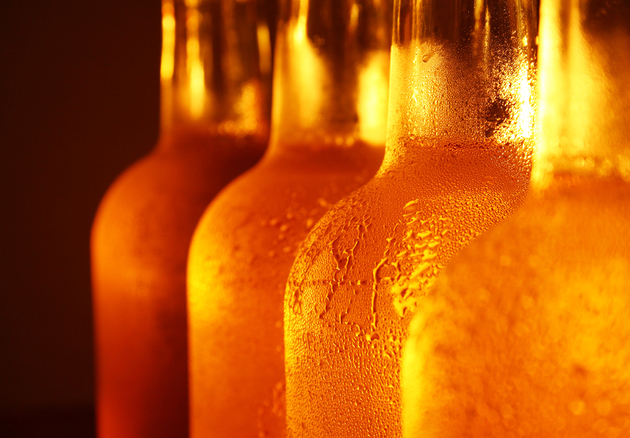
Photo/Shetuwang
Nov. 26 (NBD) -- The China Alcoholic Drinks Association (CADA)'s beer branch will soon release the draft of China's first group standards for craft beers for public comments.
The new standards will raise the threshold of the craft beer industry and lead to a shrink in market size in the short run, but will drive the industry development in the long run, said the branch's secretary-general He Yong.
The Chinese craft beer industry has seen an annual growth rate of 40 percent since 2015, and the country now has over 800 craft beer brands, according to data from the organizing committee of the China Craft Beer Award.
The concept of craft brewing comes from the U.S., and compared with industrial beer, craft beer boasts higher-quality ingredients and delivers a full-flavored taste.
In 2008, China's first craft beer brands like Boxing Cat Brewery and Master Gao burst onto the scene.
In the year of 2015 or earlier, craft beer stores were mostly places where foreign people gathered, but now, more than half of craft beer drinkers are Chinese, Shen Kai, founder of Dream Brewers, said to news agency Yicai.
Beijing is currently the largest regional craft beer market in Asia, with more than 1,500 brick-and-mortar stores selling craft beer, and Shanghai has the largest amount of craft beer brands.
Previously, the CADA predicted that craft beer would account for 3-5 percent of the Chinese beer sales, and the number of craft beer brewers across the country would surpass 3,000 in the future.

Photo/Shetuwang
According to industry insiders, the explosive growth of the craft beer industry is credited to the complex and full-bodied taste of craft beer as well as the industry's relatively low access threshold.
However, the craft beer industry is not the "cash cow," warned Li Qing, President of Urbrew. Newcomers would easily get trapped in a beer business without competitive products.
The industry is now at the burgeoning stage, and finding appropriate distribution channels and consumption scenes will be top priorities, said beer expert Fang Gang.
Currently, big craft beer breweries are seeking to partner with e-commerce platforms, restaurants and traditional beer dealers, but little effects have been produced, several brewers told Yicai.
In fact, due to a lack of brand awareness, craft beer products would be hard to generate strong sales on e-commerce sites. Plus, the transportation of beer would be a tough task and the cost would be high. At traditional retail outlets, craft beer's superiority would be compromised. In addition, craft beer products will likely be involved in a price war, the brewers added.
Though craft beer contributed less than one percent to China's total beer sales at present, the sector's promising prospect has attracted a number of beer companies.
Last month, Shen Kai's Dream Brewers secured an investment of more than 30 million yuan (4.3 million U.S. dollars) in its Series B funding round.
Early this year, the world's leading brewer AB Inbev's new plant in Wuhan, central China's Hubei province, came on stream. Built to produce craft beer specially for the Chinese market, the plant has a designed annual production capacity of 3,000 bottles.
China's top brewer China Resources Snow Breweries also plans to shift its focus to craft beer and imported beer. It has gained several craft beer brands through the tie-up with Heineken.
Email: lansuying@nbd.com.cn


 川公网安备 51019002001991号
川公网安备 51019002001991号





